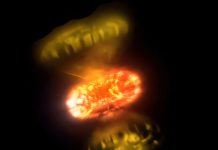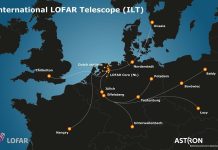
In modern physics, the Higgs boson is famous for giving particles their mass.
But a new study suggests an entirely different possibility: mass might come from the geometry of hidden extra dimensions, not from the Higgs field at all.
The idea comes from research published in Nuclear Physics B and led by Richard Pincak, who explores how the structure of spacetime itself might generate the forces and particles we observe.
According to this theory, our universe may contain extra dimensions beyond the familiar three dimensions of space and one of time.
These invisible dimensions could be curled up into complicated seven-dimensional shapes called G₂-manifolds.
Physicists have studied these structures for years, mostly assuming they stay fixed and unchanging.
But Pincak and his collaborators propose something new: these extra dimensions might evolve over time through a process known as G₂–Ricci flow, where the internal geometry gradually shifts and stabilizes.
One important feature of these higher-dimensional shapes is torsion, a kind of built-in twist. Torsion is similar to the way biological molecules like DNA twist into spirals.
Pincak explains that if these extra-dimensional shapes twist and evolve, they can reach stable states known as solitons—structures that maintain their shape over time.
These solitons, the team argues, might naturally cause spontaneous symmetry breaking, a key process in particle physics that determines how fundamental forces behave.
In the Standard Model, spontaneous symmetry breaking is caused by the Higgs field, which gives mass to the W and Z bosons. But in this new geometric picture, mass would instead arise from the torsion of extra dimensions.
In other words, matter would be a result of geometry resisting deformation—not an effect of an external field. This raises the possibility that particles like the W and Z bosons might get their mass from the shape of space itself.
The theory also connects torsion to the curvature of spacetime, offering a potential explanation for another major mystery: the positive cosmological constant, which is responsible for the accelerated expansion of the universe.
If torsion contributes to spacetime curvature, it might help explain why the universe is expanding faster today than in the past.
The researchers even propose a new kind of particle called the “Torstone,” which could arise from torsion in extra dimensions. Although still speculative, such a particle could one day be detected in high-energy experiments.
Ultimately, the study seeks to extend Einstein’s idea that gravity comes from geometry.
If gravity is geometry, perhaps all forces—electromagnetism, the strong force, the weak force, and even mass itself—come from geometry too. As Pincak puts it, nature often favors elegant solutions, and the deepest laws of physics might be hidden in the shapes of unseen dimensions.



